
CHM curators like me are always scanning the historical horizon for artifacts and materials that can reveal the pre-history of significant computer-based devices we take as commonplace today. Recently, the Museum received a rare donation of real human benefit: a one-of-a-kind prototype of a cochlear implant (CI) speech processor developed at Stanford University in the late 1970s/early 1980s.
Cochlear implants are surgically implanted devices that provide a sense of sound to people with severe or profound hearing loss. The speech processor does the heavy lifting of converting sounds heard by the cochlear implant’s microphone into signals sent directly into the deaf person’s ear via a brain-computer interface (sensor array). Initially, a single channel was used, producing very poor results. Compare a single channel to later—multi-channel—cochlear implants in the video below.
Cochlear implant simulation.
Built into a 1970s-era briefcase, the portable speech processor (PSP) was an important step in using computers to address profound hearing loss, a widespread disability. According to the World Health Organization (WHO), approximately 1.5 billion people (nearly 20% of the global population) experience some degree of hearing loss. Of these, around 430 million people have disabling hearing loss, which significantly impacts their ability to communicate and perform daily activities.
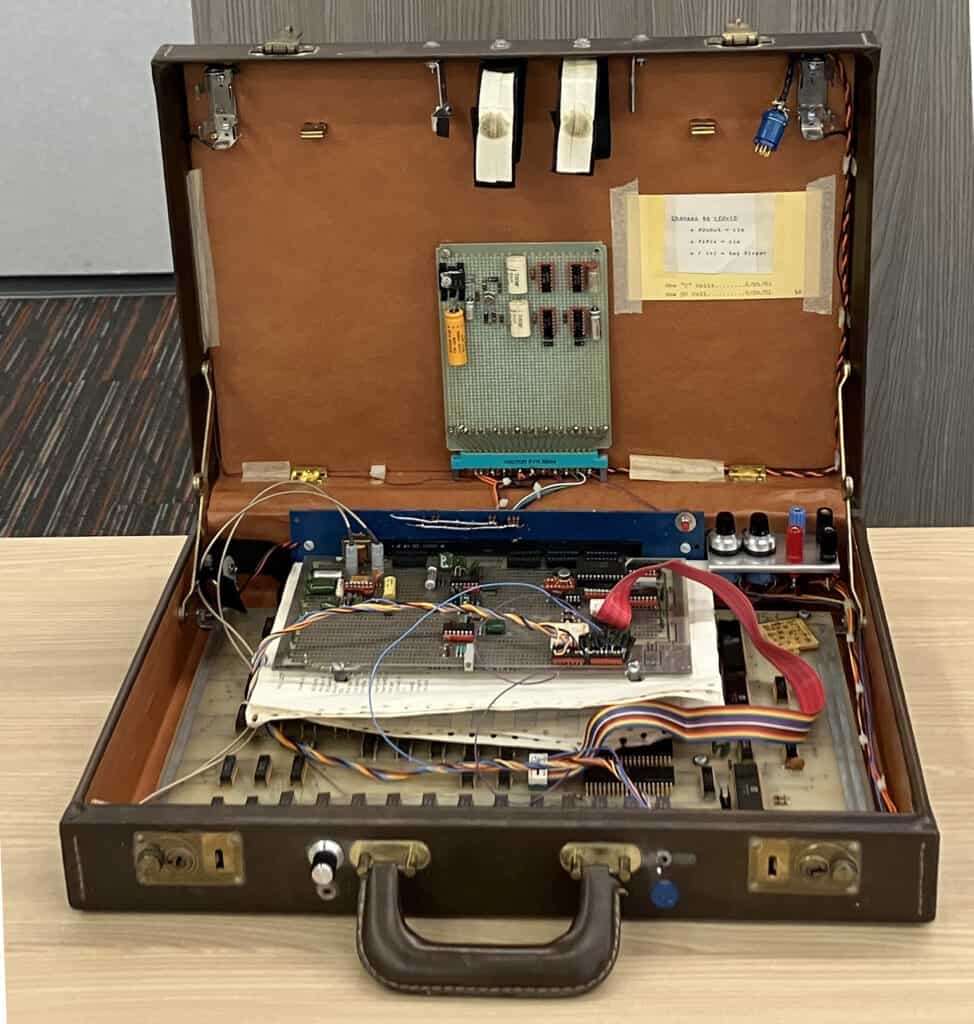
The Stanford PSP-2 Portable Speech Processor
The donation process began in April 2024, when NYU professor Dr. Mara Mills approached CHM curator David Brock about a history of the cochlear implant she is cowriting. She put us in touch with Dr. Les Atlas—one of several Stanford electrical engineering PhDs who had worked on the PSP-2 in the 1980s—to consider preserving some of the physical artifacts from this project. Back in the day, they, and other graduate students, created a 6-channel system under Principal Investigators Professor Robert L. White (Dept. of Electrical Engineering) and Dr. Blair Simmons (School of Medicine).
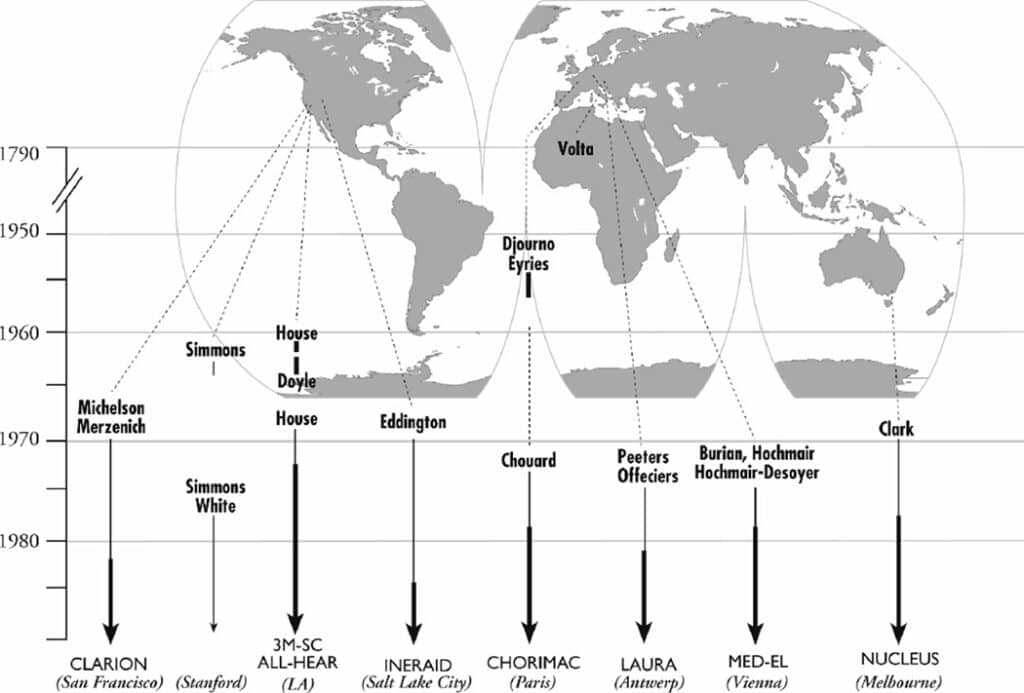
Teams around the world experimenting with Cochlear Implants. Time on vertical axis. Source: National Library of Medicine
An equally important piece of the puzzle was the brain-computer interface: the method of connecting thin electrical wires to human acoustic nerves. This was partially solved by specialized sensors built by the Stanford team.
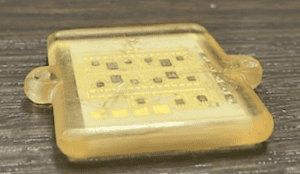
Custom brain-computer interface auditory nerve stimulation array
A small pocket in the skull (behind the ear) is made surgically to hold the internal receiver-stimulator unit, and then an electrode array is threaded into the cochlea. The implant is securely attached to the skull using sutures or clips, and the incision is closed. After the surgical site heals, the external processor is magnetically attached to the internal implant, enabling the device to function.
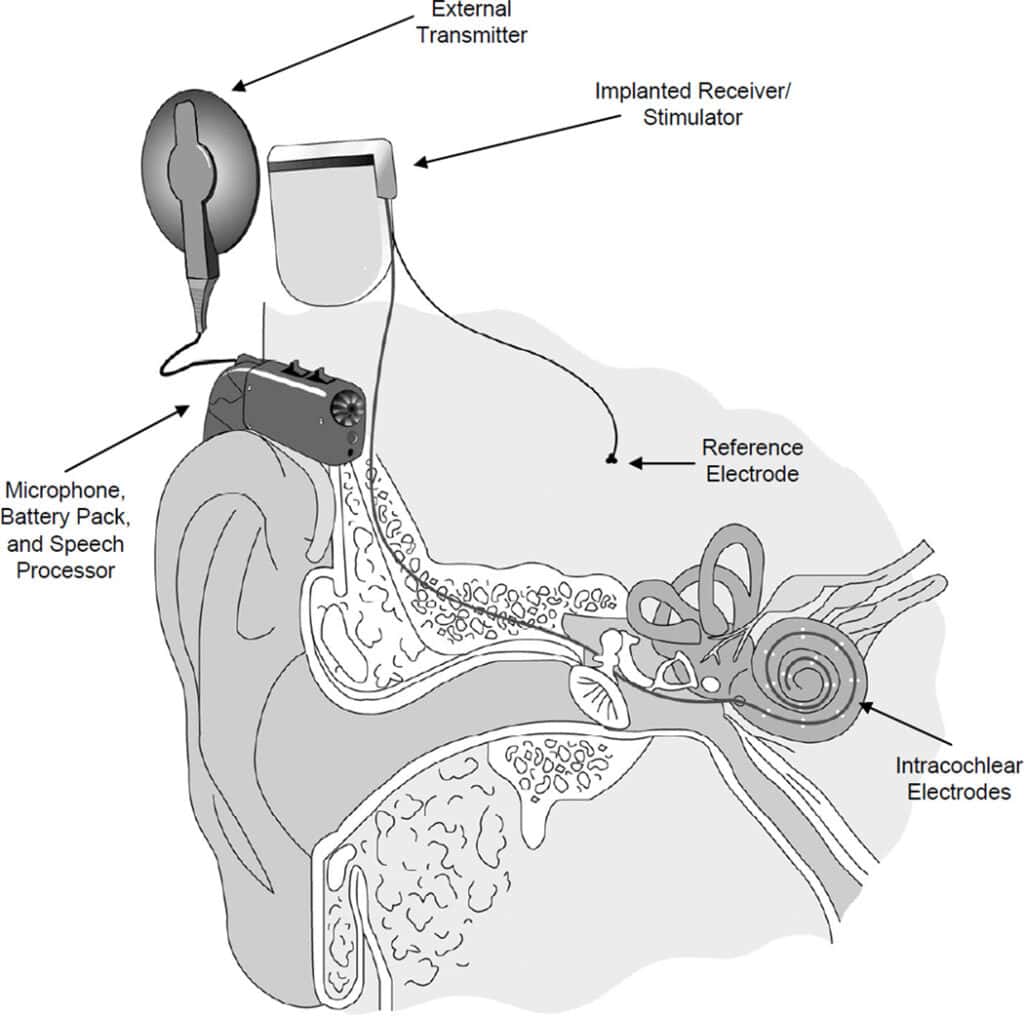
Components of a cochlear implant system. In this modern system, the speech processor that once needed a briefcase to hold it now sits behind the ear.
The donation handoff of the PSP-2 to the Museum occurred on May 31, 2024. I attended a special presentation of the prototype to CHM at the Stanford School of Medicine. In the room were some of the original inventors for whom the prototype was their PhD project: Dr. Les Atlas, Dr. Rob Mathews, and Dr. Martin Walker.
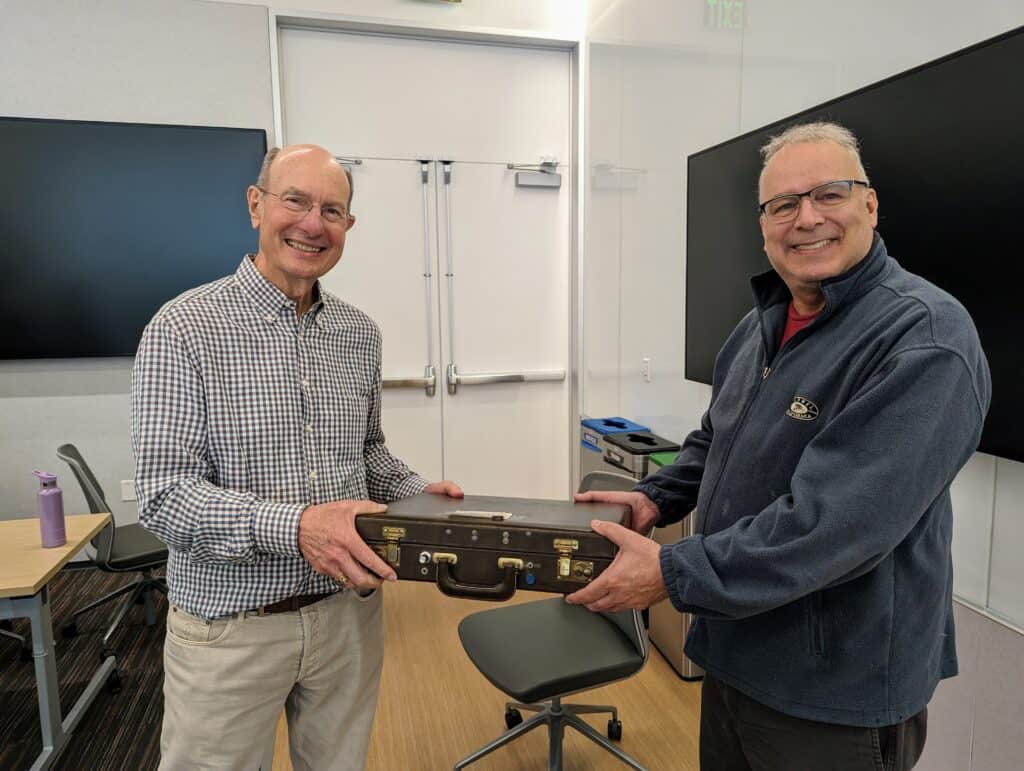
CHM's Senior Curator Dag Spicer receiving the Stanford Portable Speech Processor (PSP-2) from Dr. Martin Walker.
During the handover, a surgical resident in otolaryngology, Dr. Shayna Cooperman, joined in the conversation. Cooperman implants CIs into patients and wears a CI herself, having been mostly deaf from birth. One of the speakers, Les Atlas, co-inventor of the PSP-2, could not hear well at the event due his own limitations, and it was Dr. Cooperman who listened and repeated the questions for him. So, a current CI wearer—and surgeon who implants them—was facilitating communication between one of the original CI designers. From prototype to life-changing technology in the same room!
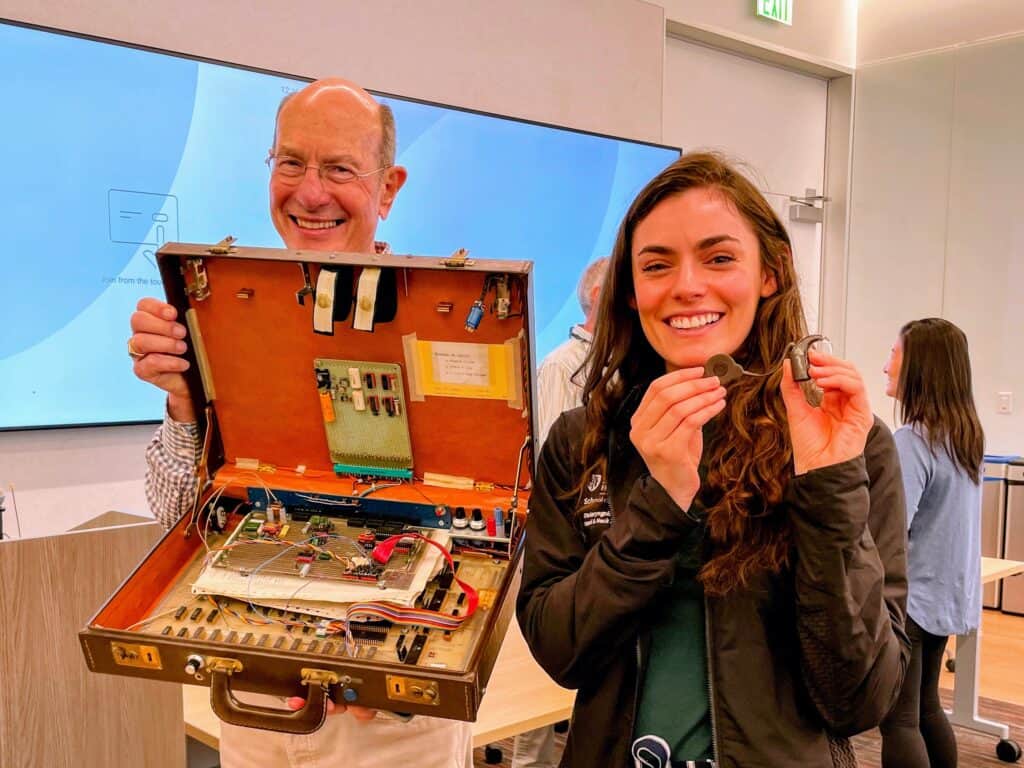
Dr. Shayna Cooperman, showing her own CI, with Dr. Marty Walker, PSP-2 designer.
Back at CHM, I worked with CHM’s Director of Collections Aurora Tucker to create a lobby display of the PSP-2, where it’s unique packaging and role in helping others can be appreciated by visitors. Centered on the PSP-2, the display also shows a model of the ear, period advertisements for early hearing aids, and the world’s first hybrid (vacuum tube and transistor) hearing aid, ca. 1954.

Four original Stanford PSP-2 PhD students of Dr. Robert White, who created the hardware and software for the PSP-2, visit the display at CHM. (From left to right) Les Atlas, Martin Walker, Rob Mathews, Mathew Herndon.
Over one million cochlear implants have been installed to-date. The breakthrough came in 1984, when the FDA approved CIs for human use. Since then, they have been used in people ranging in age from the young to the elderly.
Computers and medicine have a long relationship: in fact, it is impossible to conceive of most of modern medicine without computers: whether it is a PCR machine, for electronic health records, or for robotic surgery, computers bring accuracy, precision, repeatability and safety to healthcare.
While CIs are now very good at replicating human speech (not so much music), recent development relating to neural networks and artificial intelligence should result in a new generation of even better implants.
The Early History of the Cochlear Implant: https://pubmed.ncbi.nlm.nih.gov/23681026/
The Long Road to Today’s Cochlear Implant: https://spectrum.ieee.org/cochlear-implant-history
Cochlear implants: a remarkable past and a brilliant future: https://www.ncbi.nlm.nih.gov/pmc/articles/PMC3707130/
A Machine Hearing (by Dr Dick Lyon): https://hearinghub.edu.au/education/resources/Signal%20Processing%20for%20Hearing%20-%20Lecture%20Series/
Special thanks to: Martin Slaney; Jay Rubinstein, MD; Martin Walker; Shayna Cooperman, MD; Rob Mathews; Dick Lyon; Mara Mills, Aurora Tucker, and Les Atlas.